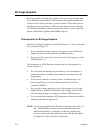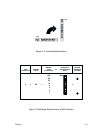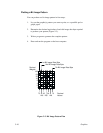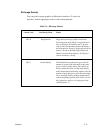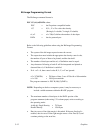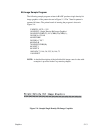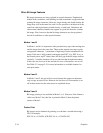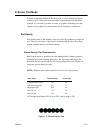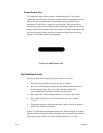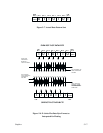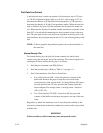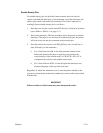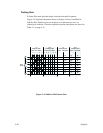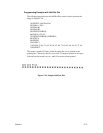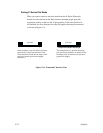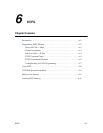
Graphics5–16
Double Density Plot
Two separate shuttle strokes produce a double density plot. The shuttle
strokes are controlled by an even plot command with corresponding dot data,
and an odd plot command with corresponding dot data, which allows a
maximum of 1584 dots in a single dot row at 60 dpi. The even dot plot is
sent first for control of the initial plot pattern; then the odd dot plot is sent for
control of the final dot pattern. The dots average .017 inches in diameter, and
the vertical density remains the same in normal and high density plotting.
Figure 5–6 illustrates double density plotting.
Figure 5–6. High Density Plot
Plot Data Byte Format
In P–Series Plot mode, the plot data byte format is as follows:
• Each data byte specifies six out of twelve dot columns.
• Bits 1 to 6 of the data byte address the odd–numbered dot columns in
the odd dot plot mode; bits 1 to 6 of the data byte address the
even–numbered dot columns in the even dot plot mode .
• Bit 6 and/or bit 7 of the data byte must be 1 (or true) in plot mode.
• Bit 8 of the data byte is not used in Plot mode and may be either
a 1 or 0.
• The binary equivalent of the plot data bytes must be known to address
specific dot positions accurately.
Figure 5–7 illustrates the actual data pattern sent. Whereas Figure 5–8 shows
how the printer interprets the data for plotting; a dot is printed at the location
addressed by each of bits 1 to 6 in the data byte that is set (1 or true).



